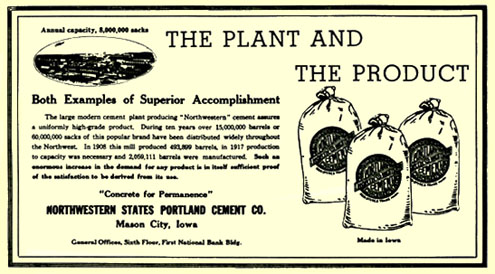|
VOL. 1 NO. 1 |
THE IOWA FARMSTEAD |
1920 |
||
| Go to page: Home, 2, 3, 4, 5, 6, 7, 8, 9, 10, 11, 12, 13, 14, 15 | ||||
|
By A.S. Worth (Before Harrison County Farmers’ Institute) The
beginning of the twentieth century has witnessed rapid strides in the use
of cement and concrete in a thousand and one different lines of
construction work. Nor is it difficult to find the cause. The scarcity
of timber and lumber is the principal cause. Then if you compare the
lasting qualities of the two materials, cement is far the cheaper. The
U.S. is fast losing her forest primeval. Therefore, we must find a
substitute, and cement and concrete is fast taking the place of lumber as
a building material. |
Even a hog is inclined to be clean if you give him a chance. A feeding floor can be swept clean or flushed once a day or better after each meal, and prevent disease in your herd. CEMENT WALKS ON THE FARM We stopped at a farm home late one afternoon not long ago, and found the oldest son, who was home for a few weeks on his vacation, busy making a cement sidewalk from the kitchen door to the pump, located one hundred and fifty feet away. He began by making a platform of comfortable size next to the kitchen door, and started the walk from this cement platform. The walk was two and a half feet wide, which is ample for farm purposes. It is needless to say that this boy’s mother and sisters will appreciate this walk not only because it gives them a comfortable way to the pump, but because it will stop the tracking into the kitchen of a vast amount of mud and dirt.
|
|||
|
|
||||
|
Explorations in Iowa History Project |
||||
|
13 |
||||

